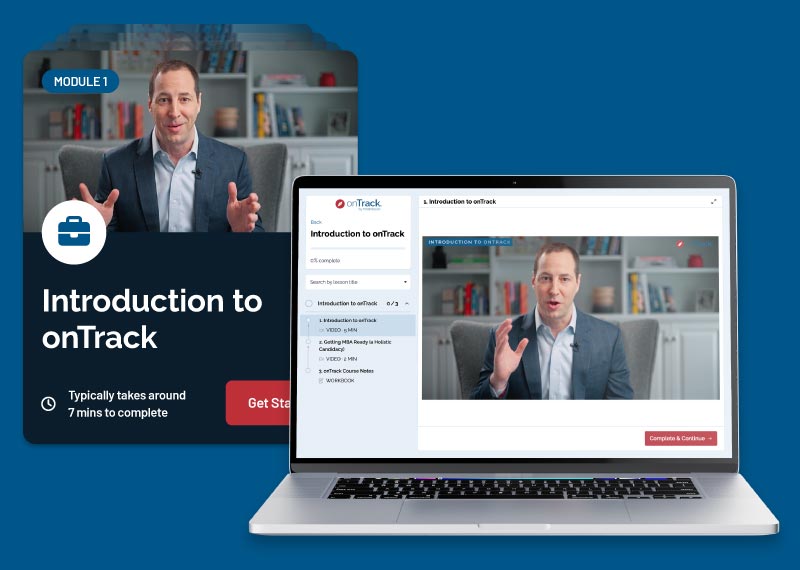Your MBA application essays give you the chance to distinguish yourself from the multitude of other business school applicants who also want a spot in your target program’s next incoming class. The essays allow you to show the admissions committee who you are. So, drawing on our experience of having read tens of thousands of MBA application essays, we want to help you avoid making any of these five common MBA essay mistakes.
1. Writing about Someone Else
Sometimes, applicants have difficulty knowing how to start their essays—particularly the Stanford Graduate School of Business’s “What matters most to you, and why?” and Harvard Business School’s “What more would you like us to know?” essays. Generally, we want to give our reader context for our stories, so candidates often begin by discussing their family history. Although that strategy can sometimes be effective, the key is to avoid having too much of your essay focused on someone else. If you want to give the admissions committee some background as to where your values come from, make sure that you keep the discussion of other people to a minimum and that you transition quickly back to yourself. You should always play the lead role in your application essays.
2. Starting with the Conclusion
At the beginning of your essay, always ensure that you truly start there—at the beginning—without rushing ahead to reveal the end of your story. So, when the Yale School of Management (SOM), for example, asks about the biggest commitment you have made in your life, you should not write something like “My biggest commitment was to my brother, whom I encouraged to return to college and helped get his first job, where he was just promoted.” You would give away the whole story, including the outcome, in your very first sentence! Nothing would be left to hold the reader’s attention for the rest of the essay. Instead, make sure that the opener for your essay simply opens. Consider this much more effective alternative: “When my brother dropped out of college, I knew we had only a short window of time in which to get him back on track.” This kind of opener makes the reader want to find out what happened next; they will feel compelled to continue reading.
3. Telling Rather than Showing
In the first sample opening sentence we offered in the previous tip, not only does the writer immediately reveal the outcome of their story but they are also “telling” what they did, rather than “showing” their actions in the form of a narrative. If you provide the admissions reader with the details of your story in such a way that you lead them to reach the conclusion themselves, you do something much more important—you reveal your actions, your decision-making capability, and your authenticity! By directly telling the reader the conclusion and discussing it at length without context, you risk sounding arrogant, but showing the reader creates an engaging and effective essay. For more examples of how to do this, read this helpful blog post.
4. Pandering to the Admissions Committee
After providing what a school has asked for in its essay prompt, applicants often feel the urge to add some measure of flattery to their essay or to tie their answer directly to the school in some way. For example, in the aforementioned Yale SOM essay prompt, the school asks applicants to discuss their biggest commitment, but it does not ask them to explain how that commitment relates to Yale. Yet a candidate might feel compelled to end their essay by writing, “Like I committed to my brother, I will commit to my brilliant and talented classmates at Yale, where together, we will benefit from the school’s unparalleled curriculum.” The admissions officers do not need to be convinced of the caliber of their MBA program, and you certainly do not want them to feel you are fawning or just plain overdoing it. Trust in the strength of your candidacy, rather than pleading or relying on compliments. Of course, if an MBA program does ask some version of “Why our school?,” you will need to do your research and provide that information, but refrain from addressing the topic otherwise. For more on this topic, check out this blog post.
5. Not Answering the Question
This tip might sound obvious, but experience has shown us that it needs to be said: always answer the question the school is asking. Many applicants start out by doing so but then keep tweaking their essay and getting input from others until they end up somewhere completely different. Some candidates will even cut and paste an essay from another school, trying to fit a square peg into a round hole to save themselves the time and effort necessary to create a whole new essay—but this strategy does not work. When you believe you are truly done writing your essay, step back and read the school’s question again and take a moment to reflect. Did you tell the admissions committee what you wanted to say, or did you give them the information they asked for in the essay prompt? Make sure you have done the latter.
If you would like to discuss your application essays and school selection in more detail with an expert MBA admissions consultant, sign up today for a free 30-minute consultation!



